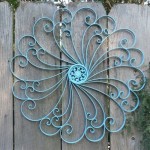Kitchen Decor Ideas For Small Kitchens: Maximizing Space and Style
Small kitchens present unique challenges when it comes to decor and functionality. The goal is to create a space that feels open, efficient, and aesthetically pleasing, despite its limited dimensions. Thoughtful planning and strategic design choices are crucial to maximizing every square inch. This article explores various kitchen decor ideas tailored for small kitchens, focusing on maximizing space, optimizing storage, and enhancing visual appeal.
Optimizing Vertical Space and Storage
One of the most effective strategies for small kitchen decor is to fully utilize vertical space. This approach involves extending storage upwards, drawing the eye upward, and creating a sense of height. Cabinets, shelving, and organizational systems can be strategically implemented to achieve this.
Floor-to-ceiling cabinets are a primary consideration. By extending cabinets all the way to the ceiling, the maximum possible storage volume is achieved. This eliminates the often unused space above standard cabinets, preventing dust accumulation and providing significantly more room for storing less frequently used items. Consider incorporating adjustable shelving within these cabinets to accommodate items of varying heights. Glass-fronted cabinets on the upper portion can also add visual interest and create an impression of spaciousness. Maintaining a consistent color palette for the cabinets, ideally a light or neutral tone, is crucial for preventing the space from feeling cramped.
Open shelving is another valuable tool for maximizing vertical space and creating a more open feel. Unlike closed cabinets, open shelves allow for visual access to stored items, reducing the sense of confinement. Floating shelves, in particular, can contribute to a minimalist aesthetic. These shelves are ideal for displaying decorative items, storing frequently used cookware, or showcasing plants. Careful curation of items displayed on open shelves is essential; overcrowding can quickly lead to a cluttered appearance. Employ matching containers and consistent organization to maintain a neat and appealing display. Consider installing a combination of open shelving and closed cabinets to balance functionality and visual appeal.
Vertical storage solutions extend beyond cabinets and shelving. Wall-mounted spice racks, magnetic knife strips, and hanging pot racks are all effective ways to free up counter space and organize essential items. These solutions not only provide convenient access to frequently used items but also add a decorative element to the kitchen. For instance, a well-organized spice rack can serve as a colorful accent, while a hanging pot rack can showcase well-maintained cookware. Implementing these solutions requires careful consideration of the available wall space and the weight capacity of the mounting hardware. Ensuring that items are securely mounted is critical for safety.
Integrating pull-out organizers within cabinets is another effective strategy for maximizing space and improving accessibility. Pull-out drawers, shelving, and pantry organizers allow for easy access to items stored deep within cabinets, preventing items from getting lost or forgotten. These organizers are particularly useful for storing pots, pans, and smaller appliances. Similarly, pull-out spice racks and cutting board organizers can significantly improve efficiency and organization. Installing these organizers requires careful measurement of cabinet dimensions to ensure a proper fit. Selecting organizers made from durable materials, such as metal or high-quality plastic, is crucial for long-term use.
Hooks are simple, inexpensive, and versatile storage solutions suitable for small kitchens. They can be used to hang utensils, towels, aprons, and even small pots and pans. Strategically placed hooks can free up drawer and counter space, making the kitchen more efficient. Consider using adhesive hooks for surfaces where drilling is not possible. Over-the-door organizers are another useful option for utilizing unused space. These organizers can be used to store cleaning supplies, food wraps, or even small kitchen tools. Before installing over-the-door organizers, ensure that the door can still close properly and that the organizer does not obstruct walkways.
Color Palette and Lighting Strategies
The color palette of a small kitchen significantly impacts its perceived size and atmosphere. Light and neutral colors tend to create a sense of spaciousness, while darker colors can make a small kitchen feel even more cramped. Strategic use of color can also enhance natural light and create visual interest.
Light colors, such as white, cream, beige, and light gray, are ideal choices for small kitchens. These colors reflect light, making the space feel brighter and more open. Using a consistent light color for walls, cabinets, and countertops creates a seamless look, minimizing visual breaks and enhancing the sense of spaciousness. Consider using different shades of the same color to add depth and dimension without sacrificing the overall sense of openness. For instance, a light gray countertop can complement white cabinets and walls, creating a subtle contrast that adds visual interest.
Accent colors can be used sparingly to add personality and visual interest to a light-colored kitchen. Bright pops of color, such as yellow, blue, or green, can be incorporated through accessories, textiles, and small appliances. For instance, a colorful backsplash, a set of vibrant dish towels, or a brightly colored kettle can add a touch of personality without overwhelming the space. It is important to use accent colors strategically, focusing on small areas to prevent the kitchen from feeling cluttered or overwhelming. Consider using complementary colors to create a balanced and harmonious aesthetic.
Natural light is a valuable asset in any kitchen, but it is particularly important in small spaces. Maximizing natural light can significantly improve the perceived size and atmosphere of a small kitchen. Avoid blocking windows with heavy curtains or blinds. Instead, opt for sheer curtains or blinds that allow light to filter through while providing privacy. If natural light is limited, consider installing larger windows or skylights to increase the amount of light entering the room. Light-colored walls and reflective surfaces can also help to amplify natural light.
Adequate artificial lighting is crucial for ensuring a well-lit and functional kitchen. A combination of ambient, task, and accent lighting is ideal. Ambient lighting, provided by overhead fixtures, should provide general illumination for the entire kitchen. Task lighting, such as under-cabinet lighting, is essential for illuminating countertops and work areas. Accent lighting, such as pendant lights or spotlights, can be used to highlight specific features or add visual interest. Consider using LED lighting, which is energy-efficient and provides bright, even illumination. Dimmable lighting allows for adjusting the brightness to suit different tasks and moods.
Reflective surfaces, such as glossy cabinets, stainless steel appliances, and mirrored backsplashes, can help to amplify light and create a sense of spaciousness. These surfaces reflect light around the room, making the kitchen feel brighter and more open. A mirrored backsplash can create the illusion of a larger space by reflecting the opposite wall. However, it is important to use reflective surfaces strategically, as too much reflection can be overwhelming. Balance reflective surfaces with matte finishes to create a balanced and visually appealing aesthetic.
Multifunctional Furniture and Appliances
In small kitchens, every piece of furniture and appliance should serve multiple purposes. Multifunctional items can significantly improve efficiency and maximize space utilization. Selecting furniture and appliances that are specifically designed for small spaces is crucial.
Folding tables and chairs are ideal for small kitchens where space is limited. These items can be easily folded and stored when not in use, freeing up valuable floor space. Wall-mounted drop-leaf tables are another excellent option, providing a temporary workspace or dining surface that can be folded down when not needed. When selecting folding furniture, prioritize durability and stability. Ensure that the folding mechanisms are easy to operate and that the furniture is sturdy enough to support the intended use.
Built-in appliances can save valuable space compared to freestanding models. Built-in refrigerators, dishwashers, and ovens seamlessly integrate into the kitchen cabinetry, creating a streamlined and space-saving design. Compact appliances, such as countertop dishwashers and microwave ovens, are also ideal for small kitchens. These appliances provide the same functionality as larger models but occupy significantly less space. When selecting built-in and compact appliances, consider energy efficiency and ease of maintenance.
Islands are a popular addition to many kitchens, but they can take up valuable space in small kitchens. A small kitchen island on wheels can provide additional counter space and storage without permanently occupying a large footprint. These islands can be easily moved around the kitchen as needed or stored away when not in use. When selecting a mobile kitchen island, consider its size, storage capacity, and mobility. Ensure that the island has sturdy wheels and a durable countertop.
Storage ottomans can serve as both seating and storage in a small kitchen. These ottomans provide a comfortable place to sit while also offering storage space for kitchen items, such as cookbooks, linens, or small appliances. When selecting a storage ottoman, consider its size, comfort, and storage capacity. Ensure that the ottoman is upholstered in a durable and easy-to-clean fabric.
Utilizing the inside of cabinet doors for storage is another effective way to maximize space. Install shallow shelves or organizers on the inside of cabinet doors to store spices, measuring cups, or other small items. This utilizes otherwise wasted space and keeps frequently used items within easy reach. Consider using clear organizers to easily see what is stored inside. Before installing organizers on cabinet doors, ensure that the doors can still close properly and that the organizers do not interfere with items stored inside the cabinets.

10 Small Kitchen Design Ideas The Family Handyman

50 Best Small Kitchen Ideas Layout Photos

Small Kitchen Ideas Expert Design Advice For Compact Kitchens

50 Best Small Kitchen Ideas Layout Photos

Small Kitchen Ideas 36 Ways To Balance Function And Style Homes Gardens

16 Best Small Kitchen Ideas Clever Solutions With A Big Impact Decorilla Interior Design

53 Small Kitchen Ideas From The House Garden Archive

10 Small Kitchen Design Ideas The Family Handyman

99 Ingenious Ideas To Steal For Your Small Kitchen

230 Small Kitchens Ideas Kitchen Design Remodel








